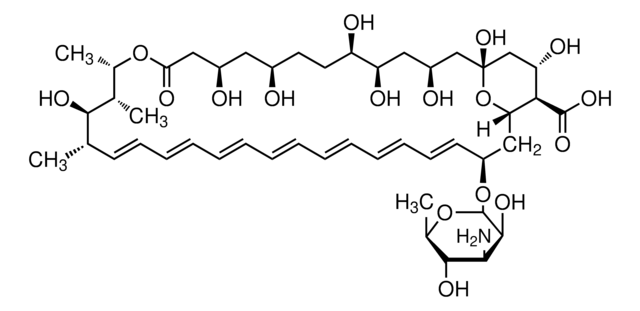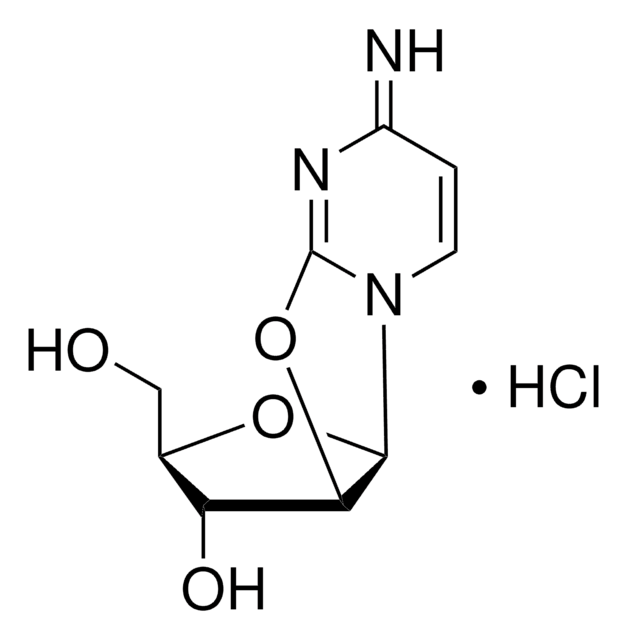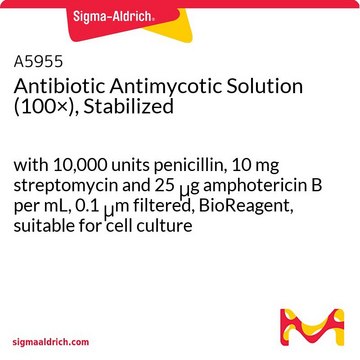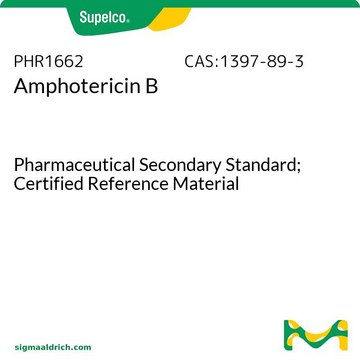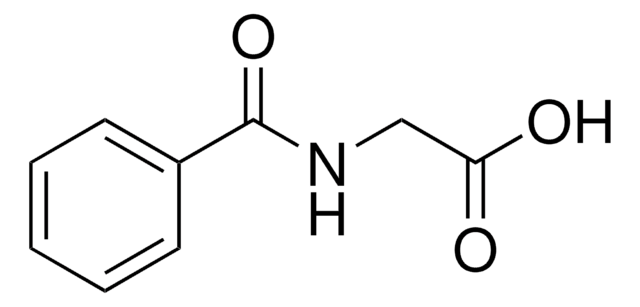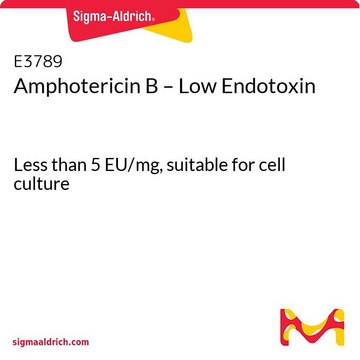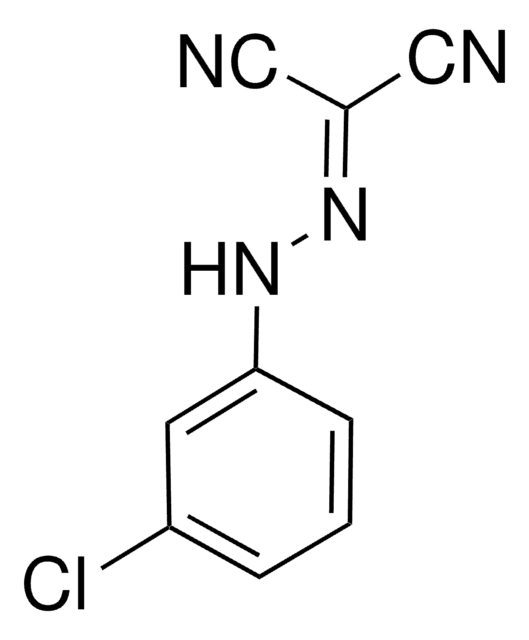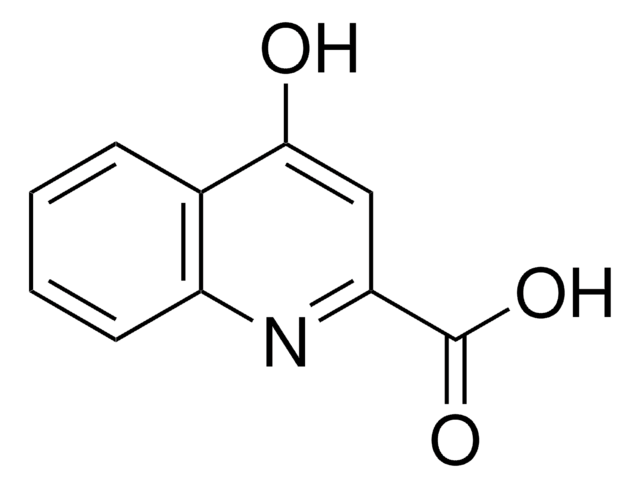A9528
Amphotericin B solubilized
powder, suitable for cell culture, BioXtra
Synonym(s):
Amphotericin B from Streptomyces sp., Fungizone
About This Item
Recommended Products
Product Name
Amphotericin B solubilized, powder, γ-irradiated, BioXtra, suitable for cell culture
Quality Level
sterility
γ-irradiated
product line
BioXtra
form
powder
technique(s)
cell culture | mammalian: suitable
antibiotic activity spectrum
fungi
yeast
Mode of action
cell membrane | interferes
storage temp.
2-8°C
SMILES string
C[C@H]1O[C@@H](O[C@@H]2C[C@@H]3O[C@](O)(C[C@@H](O)C[C@@H](O)[C@H](O)CC[C@@H](O)C[C@@H](O)CC(=O)O[C@@H](C)[C@H](C)[C@H](O)[C@@H](C)\C=C\C=C\C=C\C=C\C=C\C=C\C=C\2)C[C@H](O)[C@H]3C(O)=O)[C@@H](O)[C@@H](N)[C@@H]1O
Looking for similar products? Visit Product Comparison Guide
1 of 4
This Item | GF50506028 | GF28127921 | GF59311717 |
|---|---|---|---|
| form foil | form foil | form foil | form foil |
| manufacturer/tradename Goodfellow 295-991-38 | manufacturer/tradename Goodfellow 505-060-28 | manufacturer/tradename Goodfellow 281-279-21 | manufacturer/tradename Goodfellow 593-117-17 |
| density 7.86 g/mL at 25 °C (lit.) | density 7.86 g/mL at 25 °C (lit.) | density 7.86 g/mL at 25 °C (lit.) | density 7.86 g/mL at 25 °C (lit.) |
| resistivity 9.71 μΩ-cm | resistivity 9.71 μΩ-cm | resistivity 9.71 μΩ-cm | resistivity 9.71 μΩ-cm |
| mp 1535 °C (lit.) | mp 1535 °C (lit.) | mp 1535 °C (lit.) | mp 1535 °C (lit.) |
General description
Application
Biochem/physiol Actions
Packaging
Components
Caution
Preparation Note
Aqueous solutions cannot be sterile filtered due to poor solubility. If reconstituted in sterile water, there is no need to filter sterilize.
It is also soluble in DMSO (30-40 mg/mL) and in dimethylformamide (2-4 mg/mL).
Other Notes
Kit Components Only
- Amphotericin B ~ 45 %
- Sodium deoxycholate ~ 35 %
- Sodium phosphate balance
Signal Word
Danger
Hazard Statements
Precautionary Statements
Hazard Classifications
STOT RE 1
Storage Class Code
6.1C - Combustible acute toxic Cat.3 / toxic compounds or compounds which causing chronic effects
WGK
WGK 3
Flash Point(F)
Not applicable
Flash Point(C)
Not applicable
Personal Protective Equipment
Regulatory Information
Choose from one of the most recent versions:
Certificates of Analysis (COA)
Don't see the Right Version?
If you require a particular version, you can look up a specific certificate by the Lot or Batch number.
Already Own This Product?
Find documentation for the products that you have recently purchased in the Document Library.
Which document(s) contains shelf-life or expiration date information for a given product?
If available for a given product, the recommended re-test date or the expiration date can be found on the Certificate of Analysis.
How do I get lot-specific information or a Certificate of Analysis?
The lot specific COA document can be found by entering the lot number above under the "Documents" section.
How do I find price and availability?
There are several ways to find pricing and availability for our products. Once you log onto our website, you will find the price and availability displayed on the product detail page. You can contact any of our Customer Sales and Service offices to receive a quote. USA customers: 1-800-325-3010 or view local office numbers.
What is the Department of Transportation shipping information for this product?
Transportation information can be found in Section 14 of the product's (M)SDS.To access the shipping information for this material, use the link on the product detail page for the product.
What is the shelf life of Product A9528, Amphotericin B solubilized?
Product No. A9528 has a recommended retest date of 5 years from the initial QC release date. This date can be found on the lot-specific Certificate of Analysis.
What is the amount of Amphotericin B in Product No. A9528?
The package size is the amount of Amphotericin B present in the vial. If weighing the product, utilize the potency value on the lot specific Certificate of Analysis as a correction factor.
What concentration should Product A9528, Amphotericin B solubilized, be used at?
We recommend to use Product No. A9528 at 5.6 mg solid per Liter. Cell culture tested amphotericin B solubilized preparation is approximately 45% amphotericin B, 35% sodium deoxycholate, with the balance being sodium phosphate. The amphotericin B is at least 80% amphotericin B and 3-5% amphotericin A by HPLC. The exact amount of amphotericin B in the product can be found on the lot specific Certificate of Analysis under Potency.
My question is not addressed here, how can I contact Technical Service for assistance?
Ask a Scientist here.
Articles
Prevent fungal, yeast, and mold contamination in cell cultures. Discover the best antifungal agent for your cultures with the extensive Sigma® antifungal collection.
Antibiotic kill curve is a dose response experiment in which mammalian cells are subjected to increasing amounts of selection antibiotic
Our team of scientists has experience in all areas of research including Life Science, Material Science, Chemical Synthesis, Chromatography, Analytical and many others.
Contact Technical Service